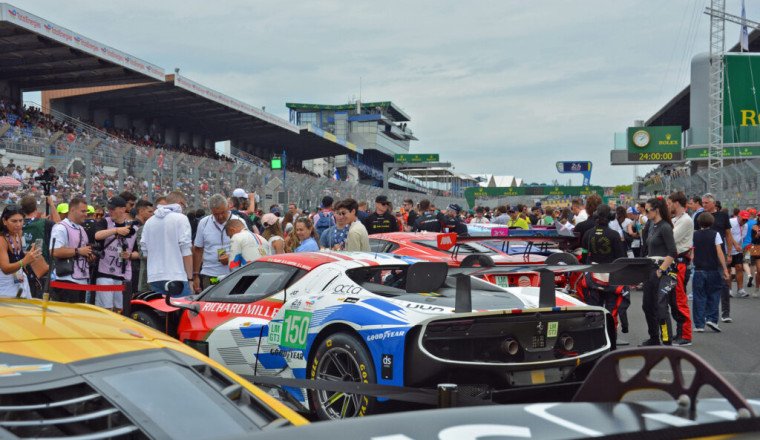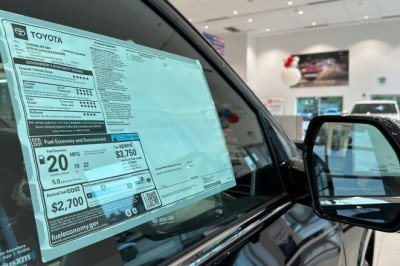
Beyond the already crazy idea of racing non-stop for a full day, the 24 Hours of Le Mans is pretty insane. Setting it all up requires investing a substantial amount of time, money, and material resources, both for the teams and for the organizers. It’s a similar story on the spectator side: Plots of land surrounding the track that are empty for most of the year temporarily become campgrounds that look like tiny towns, complete with bathrooms, grocery stores, bars, and restaurants. The wildest part of Le Mans is the Grid Walk, however.
The name says it all. About two and a half hours before the race, every car regardless of team or category lines up on the starting grid so that fans can get a closer look at what they’ll be watching speed by for the next 24 hours. For spectators, it’s a rare opportunity to get an up-close-and-personal look at a Le Mans car. The catch is that there are literally thousands of people who want to see what, say, a Porsche 963 looks like from a foot away, and they’re all walking onto the grid at the same time through the same gate.
I nearly turned around when I saw the horde of people lined up; It was like a scene out of a zombie movie. One of my colleagues convinced me to stay, and in hindsight I’m glad he did. As soon as the gates open, the crowd moves through it like a wave and dissipates on the grid. Most people hang out close to the Hypercars, so the mob gradually thins as you walk toward the LMP2 and GT3 cars.
Stepping onto the grid feels like leaving planet Le Mans. There’s a palpable tension in the air on the other side of the track, where the teams are located, as officials anxiously wait for the race to start. Racing is fun, but at the 24 Hours of Le Mans, racing is primarily business, and there’s a lot at stake. Leave the team area, and you’ll encounter one tired-looking spectator after the other. Many show up to the track early to claim a good vantage point, so they’ve been baking in the heat like sun-dried tomatoes for hours, or even days.
None of this matters during the Grid Walk. It’s a party. It’s an incongruous mix of rabid fans hoping to snap a selfie with their favorite driver, smartphone-wielding kids, journalists carrying cameras the size of flat-twin engines, and team members. One team running a BMW M4 was dancing around the car, with one guy carrying another on his shoulders, as the crowd chanted them on. Close by, two mechanics were elbow-deep in a Mercedes-AMG GT’s engine bay as they seemingly tried to repair a last-minute problem.
Back at BMW, two men turned an M4’s roof into a desk as they analyzed data on a laptop. Ziggo Sport’s drivers posed for a picture, while someone from Cadillac looked at his phone with his back turned to it all. Jim Farley (yes, that Jim Farley) casually walked down the grid. Someone told me he spotted an actor whose name I forgot, and who I wouldn’t have known—there’s a reason I don’t write about movies.
Grid Walk is a lot to take in, but it captures the essence of Le Mans pretty well. And, in an instant, it’s over. The race marshals channel their inner shepherds to usher the mob off the grid, via some of the garages if needed. The cars and some of the team members stay behind, a sign that Le Mans is about to get serious.
I see the 4th place Ferrari was just disqualified. Hmmm.
I really have no care of France but would love to visit this race one year. My father was not a racing nut like me but he was at the 1955 race the year of the crash.
He surprised me when he told me of how bad it was as I never even knew he had known it had even happened.















Facebook Conversations